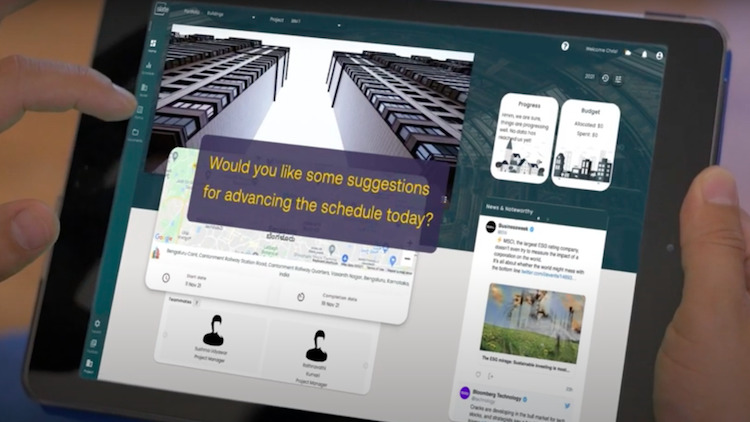
Skanska is among the first in the construction sector to use a digital assistant from Slate Technologies.
Slate is an AI software platform for the construction industry. According to Slate, the digital assistant “executes multi-dimensional analysis across internal and external data sources, learning as it goes to offer full transparency into the building process”.
The data sources include enterprise resource planning systems, emails, RFIDs, 3D models and other construction-related information, along with public data such as weather and traffic, and data locked in silos and non-integrated systems within contractors and subcontractors.
Slate stated: “By integrating and analysing data from almost any location, Slate’s proprietary dynamic scheduling capabilities ensure change decisions can immediately update an overall schedule, and the order of individuals’ tasks. This dramatically boosts efficiency, improving every step of the building process. Through its integrations with subcontractors and material suppliers’ software and systems, Slate’s data insights are valuable to the executive suite, as well as any individual executing tasks on a project.”
Andrew MacAskill, operational efficiency director at Skanska UK, said: “We’re very grateful for Slate in helping Skanska navigate the valuable unstructured data that doesn’t sit in one place and doesn’t sit in a beautifully crafted data lake or data warehouse. It’s been such a fruitful partnership for us, and we genuinely believe Slate could be a game-changing opportunity for the whole industry and we wanted to be part of its development and be in it from the very start.”
Jeff Bettencourt, CEO of Slate, added: “Slate is the catalyst for a significant shift in how we deliver buildings, where software works hand-in-hand with humans to transform productivity and profitability.
“In construction, a building project is only on schedule on the day its master schedule is created. Slate offers the first-time ability for construction companies to see what is happening with all aspects of a project – including materials, workers, and weather – to perceive problems so they can make changes along the way, minimising waste and costs while maximising productivity and revenue.”
Don’t miss out on BIM and digital construction news: sign up to receive the BIMplus newsletter.












